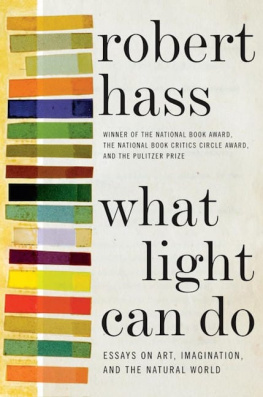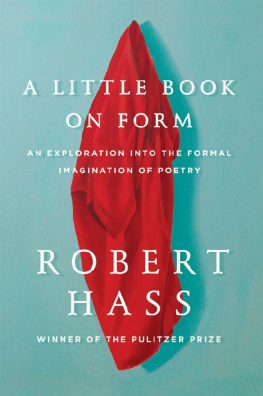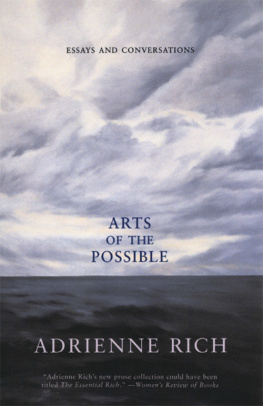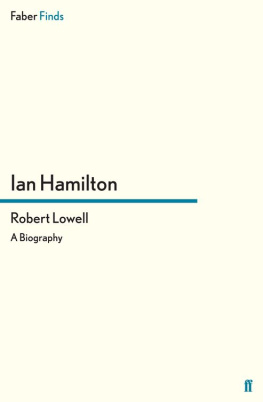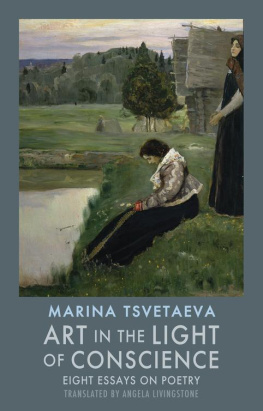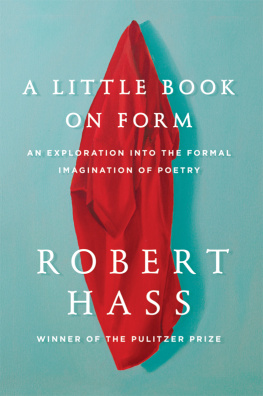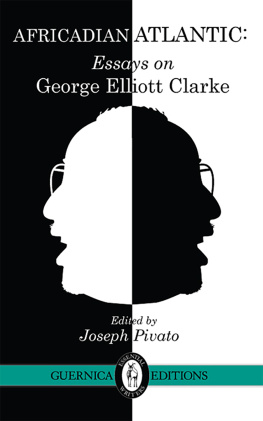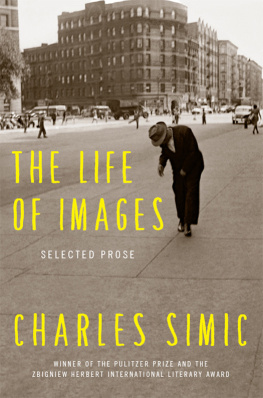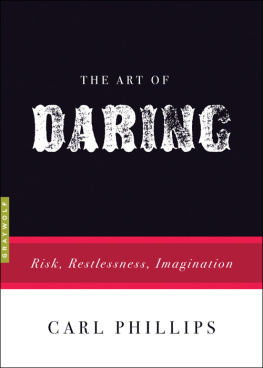Contents
O NE OF R OBERT A DAMSS BOOKS of photographs is called What We Bought: The New World. Robert Adams is, or in this book aims to be, a sort of antiAnsel Adams. What the two artists have in common, besides a name, is a certain technical authority. The source of that authority is mysterious to me. But it is that thing in their images that, when you look at them, compels you to keep looking. I think its something to do with the formal imagination. I dont know whether photographers find it in the world, or when they look through the viewfinder, or when they work in the darkroom, but the effect is a calling together of all the elements of an image so that the photograph feels like it is both prior to the act of seeing and the act of seeing. Attention, Simone Weil said, is prayer, and form in art is the way attention comes to life. Its there in What We Bought, in which Adams seems to have set out to photograph the sheer, raw, thoughtless ugliness of the country at the edges of urban Denver.
Informis was the old Roman term for ugliness: that which has no form. The American landscape is rich in it. Probably most human landscapes are, but in the United States every child learns nationalism from a song that begins, Oh, beautiful... , so it is bracing, in the way that truthfulness is bracing, to page through the opening images in What We Bought . The first image is a scrubby, misshapen tree in a field of bleached, scrubby high mountain grasses. The tree casts a mild leftward blotch of shadow, so it must be near noon, maybe eleven in the morning, and in this image east must be right. Its morning in America and the treeits hard to gauge size in such a landscape; it could be merely a shrub gone wild, but tree or shrub, it could only have gotten to be so formless by having been removed from the ecological context in which it made sense. It is given sense by Adams by being placed square in the center of the rectangle of the picturecenter low. There is a horizon just below the middle of the rectangle, and in the distance, perhaps half a mile off, there are telephone poles, which would indicate a road, and just above the hypothetical road, on the left side of the picture where the shadow is, just on the horizon, there is a tiny stretch of black and white that could be a suburb and could be an escarpment of snowy mountains, very far off. The top half of the image, into which the tree or shrub projects, is sky, though projects is not exactly the right word, since the top of the tree seems to flatten out. In fact, the tree is almost square, as if the old, fundamental vocabulary of landscape artearth, horizon, sky, trees marrying them by growing from the earth and reaching toward the lighthad been radically altered. And the sky seems to answer to this. It is immense, but its streaky, a series of horizontal lines, so that you can almost hear the weather report on a car radio telling you that it is 11:13 and partially overcast this morning in Denver, clearing by afternoon.
Adamss images came to mind when I was trying to think of a way to introduce this collection of essays. One of the things I love about the essay as a formboth as a reader and as a writeris that it is an act of attention. An essay, like a photograph, is an inquiry, a search. It implies attention to and sustained concentration on some subject. It also implies attention to the essay as a form. There are a lot of different ways to write essays, a lot of different ways to say things, so the pleasure and the frustration of writing essays is that you are often discovering the object of inquiry and the shape of the search at the same time, and spend, therefore, a certain amount of time thinking about the shape of a piece of writing or watching its shape emerge. This is a collection of twenty or so years of incidental practice in the form. For me it was work done around the edges of the practice of poetry. It includes writing of various kindscritical essays written for a literary audience, literary journalism for magazines and newspapers, lectures, catalogue essays for shows of photographs, introductions to reissues of classic books, argumentative essays written to think through a subject that was on my mind, book reviews to speak about some work that excited me or made me curious.
In What We Bought Robert Adamss second photograph is of a raw, bare field harrowed for planting; a tiny, distant horizon of bare trees; and a huge cloudy sky. The next is a field of almost white grass, patchy where the grass has not flourished, a trace of a road through the grass, and a huge sky with a few small, hovering sunlit clouds. The fourth is a muddy drainage ditch, or perhaps the beginning of an underpass, some heavy equipment in a cluttered distance, a telephone pole, a horizon, and a light cloudy sky. It is as if he thought his subject was the earth, when in fact it was the sky. Putting this book together I could see some of my themesa fascination with how poetry is made and what it does, which is to say, for me, a fascination with how we figure and share with one another what it is to be conscious and to live, to have lived; an interest in understanding the violence of the century Ive spent most of my life in; an interest in the writers of my place; an interest in photography, and in landscape, in how we see and how we have imagined and treated the earth. There may be other things as well that I am not noticing. If there is a sky for me in this collection, it is the act of attention itself, trying to see whats there, what light can do.
I need to thank the editors in whose journals, reviews, and newspapers these pieces appeared and in some cases the venues in which I was invited to give a lecture. The journals include AGNI, American Poetry Review, Believer, California Monthly, Camerawork, Ironwood, Michigan Quarterly Review, New York Review of Books, New York Times Book Review, Pequod, Poetry Flash, San Francisco Chronicle, Threepenny Review, and Washington Post Book World . Edward Taylor first appeared in Green Thoughts, Green Shades: Essays by Contemporary Poets on the Early Modern Lyric , ed. Jonathan F. S. Post, University of California Press, 2002. Reflections on the Epistles of John was published in Incarnation: Contemporary Writers on the New Testament, ed. Alfred Corn, Viking Penguin, 1990. I want to thank Eiko Hosoe, Robert Adams, Laura McPhee, and Robert Buelteman for allowing me to reproduce their work here in a form that doesnt do it justice. They would have had good reason to say no, but I needed the images if readers were going to see what I was talking about, and I hope readers will find their way to the books and exhibitions in which their images can be seen on their own terms. I should say that in a couple of the personal stories in these essays, Ive changed names to preserve the privacy of people who figure in them. Thanks to Christopher Rhodes for much editorial help. I need particularly to thank Libby Edelson for her gifted editorial eye and for imagining this book into being. It probably wouldnt exist otherwise. And, as always, eternally, thanks to Brenda Hillman for her endlessly interesting company and her patience and to Daniel Halpern for his friendship and support.
M y nineteenth birthday was also the birthday of one of my college friends. I went to an early class in logic that morning. I think we were reading Aristotles Posterior Analytics, because when I got back to my room a group of my friends was there with several bottles of champagne and I remember that in the ensuing hilarity there was much speculation about the comic possibilities in the title of that treatise. My friend Tom had been to a classit was a Catholic mens college, Saint Marysthat somehow involved the Latin names for various illicit sexual positions, coitus reservatus, coitus interruptus, coitus inter femores, and so on, which was also the source of a lot of buffoonery that blended nicely into the subject of posterior analytics, and at some point in the proceedings one of the more advanced of us got out the volume of Wallace Stevenss Collected Poems in its handsome soft blue dust jacket and read The Emperor of Ice-Cream. I had never heard the poem before and it seemed to me supremely delicious. It was March in California, high spring, the hills still green, with grazing cattle in them, plum trees in blossom, the olive trees around the campus whitening whenever a breeze shook them, and after a while a group of us was marching through the field full of mustard flowers and wild radish in the back of the dormitory, banging on pans with spoons and strumming tennis rackets and chanting out the poem, or at least the first stanza of it, which I find now is what I still have in memory:
Next page
